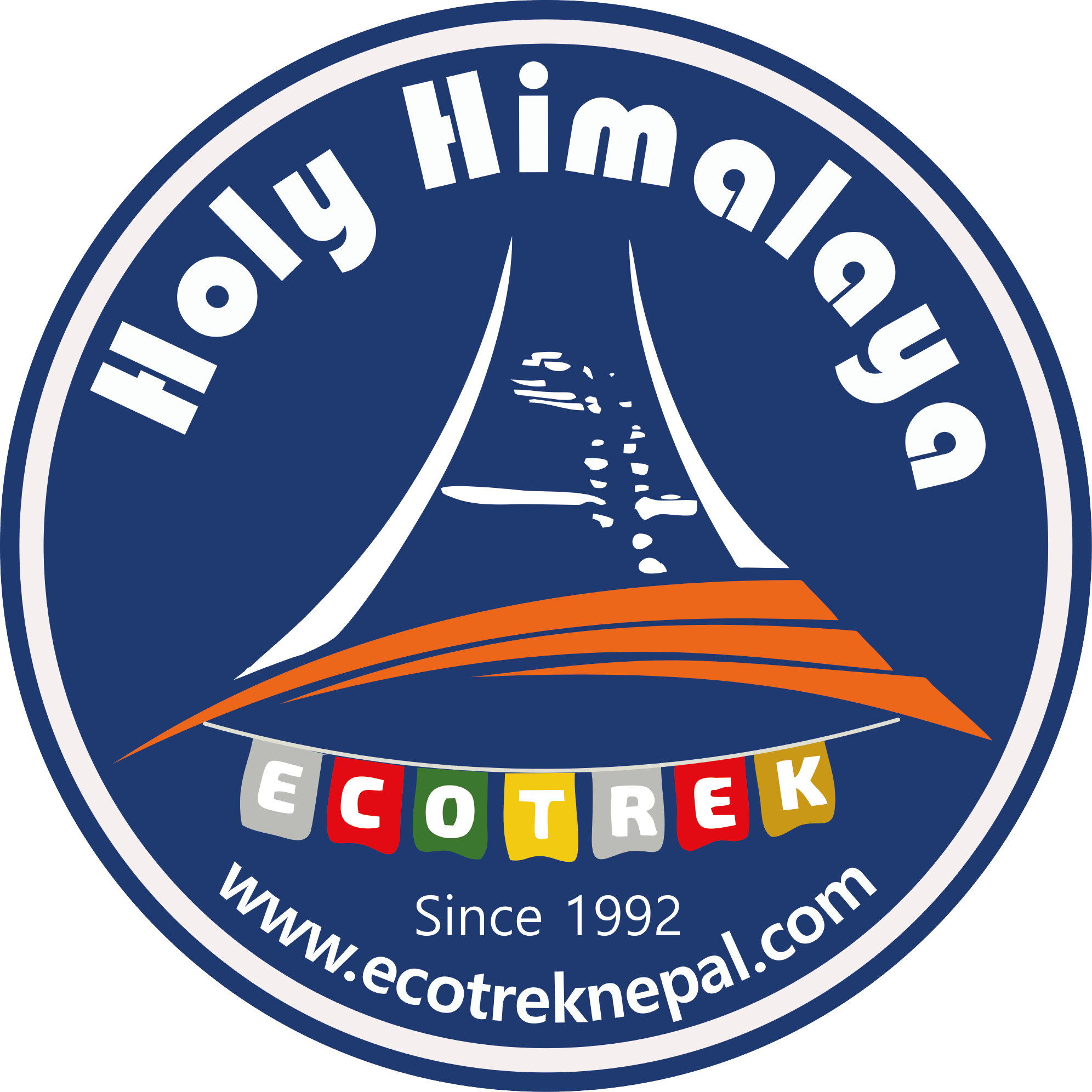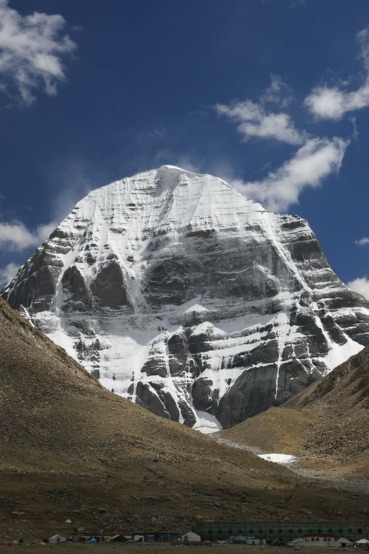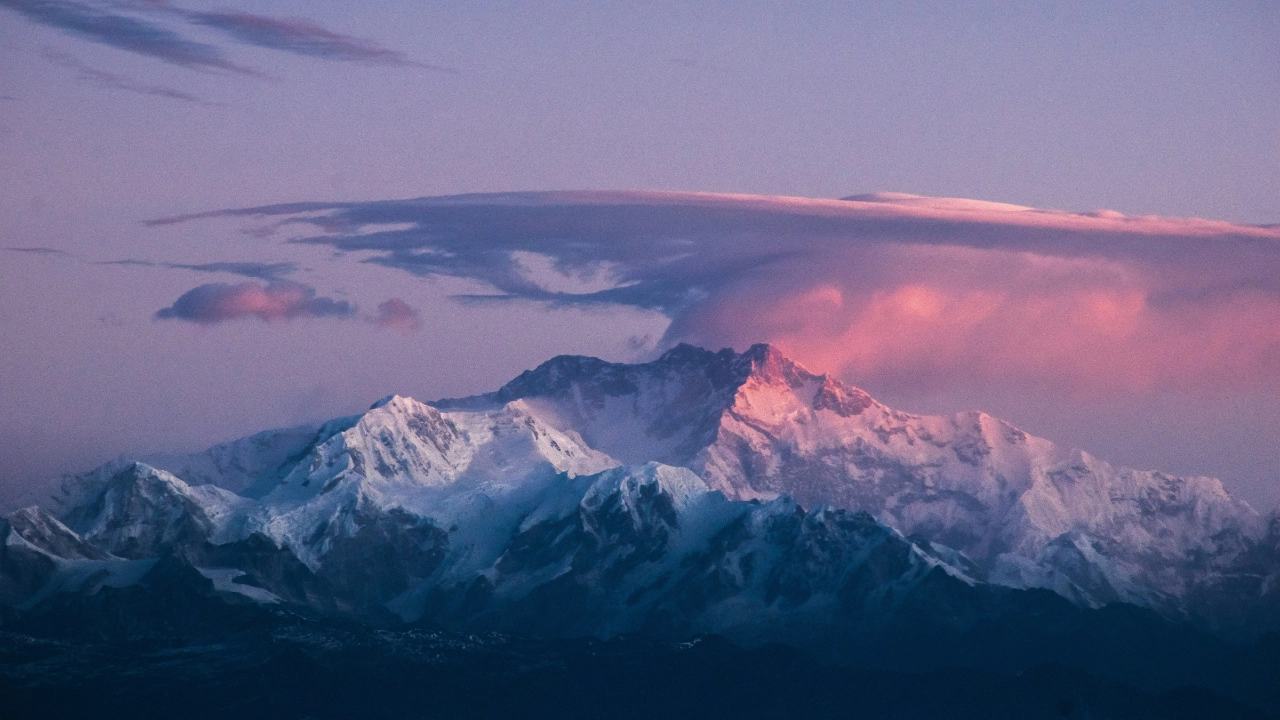
Everest Base Camp Trek
Tour snapshot
14 Days
2 persons
Nepal
Everest Region
Overview
Mount Everest, the top of the world, proudly stands at an elevation of 8848.86 m (29,031 ft.), which is known as Sagarmatha in the southern range (Nepal) and Qomologma in the northern part (Tibet) of the Everest region. Mount Everest is guarded by a group of magnificent peaks, namely, Nuptse (7,855 m), Ama Dablam (6,812 m), Kangtega (6,782 m), Thamserku (6,623 m), and so on. The other peaks that aren’t very far from the Everest region and can be witnessed during the trek are Cho Oyu (8,188 m), Makalu (8,485 m), and Kanchenjunga (8,586 m).
Fun facts: The current height of Mount Everest is 8,848.86 meters (29,031.7 ft), and it is rising by a centimeter every 365 days.
Summiting the Everest Peak may not be for everyone, but anyone who is physically fit can easily reach the Everest Base Camp and admire the beauty of the Everest from the nearest vantage point without a peak expedition.
Mount Everest features two sides, one in Tibet to the north and the other in the south, in the mountainous region of Nepal, but both sides are completely different from one another. The part that falls in the southern region is remote and has Himalayan beauty, offering the amazing experience of trekking for days in the serene valleys safeguarded by mountain peaks, immersing in the Sherpa culture of the highlands of Nepal with its very own diverse and mesmerizing ecosystem and natural resources, whereas the northern side is a high desert plateau that is usually dry and cold and offers the facility to drive to the northern Everest Base Camp in a few hours in luxury vehicles from Tibetan towns Lhasa, Xigatse, or Gantse. Though part of the same mountain body, both sides of Mt. Everest are very different from one another, including their vistas, landscapes, cultures, and flora and fauna.
Lukla, the gateway!
You can reach Lukla by either roadway or by flight. There are regular flights from Kathmandu to Lukla, but during the peak seasons (March, April, May, October, and November), the flights will be operated from Ramechhap due to air traffic expansion. To reach Ramechhap, you’ll have to drive for 5 to 6 hours from Kathmandu. From there, you’ll board a 20-minute flight to Lukla, which will cost you around USD 176 per person.
The direct flight to Lukla from Kathmandu will be operated in January, February, June, July, August, September, and December. It will take you 35 minutes to reach Lukla from Kathmandu and will cost around USD 217 per person. The flight rates are different for Nepalese, Indians, and other passport holders.
Another way to fly to Lukla is by helicopter. It will cost you between USD 350 and USD 450, depending on the availability of the helicopter, and it takes 45 minutes to reach Lukla from Kathmandu. The price of the helicopter ride is the same for all nationals.
If you opt to reach Lukla by road, it will take you at least 14 hours to drive from Tham Dada.
Everest Base Camp is true that the trail is overcrowded if you plan to trek in peak season (mid-March to mid-April and mid-October to mid-November), but the thrill of reaching the bottom of the world's top peak is irreplaceable. It is for sure that nothing can take away the sense of adventure that you experience throughout the trek, just to witness the edge of the world’s highest peak.
Alternatives for the EBC trek:
There are also a few alternatives for the Everest Base Camp trek, which can be customized according to your needs and budget. Here are a few alternatives:
- Everest BC with 3 Passes Trek (Kongma La (5535 m), Cross Cho-La pass (5330 m), Renjo La (5345 m))
- Gokyo and Pus
- Helicopter Tour: one way or a morning for breakfast!
Highlights
- Majestic views of Everest and neighbouring peaks
- Immersing in Sherpa culture and hospitality
- Visiting one of the world's oldest Monasteries
- Exploring vibrant Namche Bazar and local cuisine
- Witness sunrise from the iconic vantage point—Kala Patthar
- Step on the base of the world's highest mountain
- Create unforgettable memories in the Himalaya region of Nepal
Itinerary















Included/Excluded
Service Fee Only, Explore Nepal Fully!
Select Dates
{{type.name}}
{{type.display_price}} per person
Guests
Extra prices:
- {{total_price_html}}
- {{pay_now_price_html}}
FAQs about Everest Base Camp Trek

Trekking in Nepal can be done in all seasons, unless you are not planning to cross the high passes. The Himalayas keep changing their colour and beauty with every passing second, minute, day, and month, showcasing their beauty. The spring season (March to May) is one of the best seasons to trek in Nepal. The daytime temperature remains at 25 degrees Celsius, and the nighttime temperature drops to -0 degrees Celsius during spring. Another is the autumn, from September to November. The daytime temperature in the season will remain between 12 and 20 degrees Celsius, whereas the nighttime temperature goes below 3 degrees Celsius to -7 degrees Celsius. Spring and autumn have the perfect weather for the trek, with clearer skies and dryness. These seasons offer warm sun and stunning views throughout the trek, alluring more trekkers during this season. The winters, December to February, are the low season for the trek because of the snow. The temperature drops up to -4 degrees Celsius during the day on average in Namche Bazar, the lowest point of the trek. You can imagine what you’ll have to encounter at the higher elevation. The daytime temperature will remain -10 degrees Celsius to -8 degrees Celsius, and at night, the temperature drops to -7 degrees Celsius to -15 degrees Celsius. If you want to do the Everest Base Camp trek during the winter season, you’ll have to bundle yourself up with more thermal layering, special trekking equipment to handle the snowdrifts, and probably a couple more days to complete it. The good things about trekking in the winter are that the skies are clearer, there won’t be a lot of crowds, and the expenses may be a little less. Saying that, it’s not impossible to do this trek in the winter. It can be done, but with more unique challenges and proper planning and management.

The entire Everest region is a UNESCO World Heritage Site, also called Sagarmatha National Park. As the region is home to high mountain peaks, glaciers, deep valleys, and Sherpa settlements, it needs to be maintained, protected, and preserved. For these reasons, every trekker is required to have two permits to step on Everest Base Camp. The first one is the Khumbu Rural Municipality Permit. This pass provides access to the entire Khumbu region. It costs NPR 2000 per person for four weeks for foreign nationals, including SAARC nations. After four weeks, the cost of the permit goes to NPR 2500 per person. You will need your passport with you to get this permit. You can get this permit at Lukla. The other is the Sagarmatha National Park Entry Permit. Foreign nationals must pay NPR 3000 per person to enter Sagarmatha National Park. The fee for SAARC nationals is NPR 1500, and for Nepalese, the entry fee is NPR 100. You will need your passport to obtain this permit (Indian citizens can get this permit with their voter card as well). You can acquire this permit from the Nepal Tourism Board Office at Kathmandu or at the Sagarmatha National Park entry gate at Monjo. The easiest way to acquire any of these permits is to contact travel agencies for them. Give them the required documents, and they will do it for you, so you don’t have to worry about anything!

The Nepal Government Department of National Parks and Wildlife Conservation has set a few rules in Sagarmatha National Park for the protection and conservation of the natural beauty of the region. 1. Entering the national park without a permit is illegal. 2. Don’t harm, remove, or disturb any flora and fauna. 3. Rubbish must be disposed of in the designated areas. 4. You can’t travel during the night. 5. Respect the cultural and religious sites. 6. Visitors should be self-sufficient in fuel supply (kerosene or LP gas) when they are cooking on their own. 7. Camping inside the park should be done only in the designated areas. 8. Bring non-biodegradable items such as batteries, plastic bags, and bottles back with you for proper disposal. 9. Mountain bikes and motorcycles are prohibited inside the park. 10. Never trek alone; we will support you. Contact us at info@ecotreknepal.com. The trip can be arranged within your budgetary needs as well.

Holy Himalaya Eco Trek has rarely encountered helicopter evacuations in the mountains in the last 30 years of its operation, but the Himalayas are unpredictable, and anything can go wrong, from falling down and injuring yourself to altitude sickness and high blood pressure. You should not forget to acquire travel and trekking insurance. It will come in handy in case of an emergency medical evacuation in the mountains. Make sure your insurance will cover you for trekking from 3,000 meters up to 6,000 meters in altitude and include coverage for helicopter evacuation so that if you experience severe altitude sickness, you can be evacuated in the fastest way possible by helicopter. The cost of the insurance for the Everest Base Camp trek for 15 days will be around USD 250 per person.

The accommodations in the mountains are mostly going to be tea houses and guest houses, which are run by local sherpas. Don’t get fooled by the name ‘Tea House'; there are going to be full-fledged bed and breakfast lodges, cafes, restaurants, and bakeries, specially designed to host travelers. The accommodations are going to be cosy and warm, on both a sharing basis and with single supplements, according to your budget and wants. The washrooms up in the mountains are mostly European standard, with commodes, squat toilets, or a mixture of both. You can pay an additional USD 10 to upgrade from a shared room to a single room or a room with an attached bathroom if the tea house where you are staying has an unoccupied room. There is one accommodation rule that you need to follow when on the EBC trek. You'll have to eat your meals (breakfast and dinner) in the same hotel or tea house where you stay. It is not appreciated if you stay at one place and eat your meals somewhere else.

The food during the trek has many options and varieties in both vegetarian and non-vegetarian options for all three meals. You can have eggs, toasts, mountain breads, potatoes, pancakes, and porridge for breakfast that will give you enough energy until lunch. There will be a lot of options for lunch and dinner. You can eat soups, noodles, potatoes, spring rolls, Himalayan momo, burgers, pizza, and Dal Bhat (a Nepali dish that has rice as the main dish, comes with curry, lentils, and pickles on the side, and has a free refill) for lunch and dinner. For drinks, you’ll find plenty of varieties to choose from. You can find hot water, tea or coffee, soft drinks, and hard drinks. Foods and drinks are quite expensive on the Everest Base Camp trail in comparison to prices in the cities. The general cost for one meal starts from NPR 600 to NPR 1200 (depending on what you eat), and drinks (tea, coffee, or boiled water) are going to cost you from NPR 250 to NPR 400 per cup. You can always pack some dry snacks and energy bars to fuel your treks and water purifier tablets to purify the free water you find along the trail and keep yourself hydrated. You can enjoy fulfilling meals of the day (breakfast, lunch, and breakfast) for USD 30 (around NPR 4,000), but keep in mind that the cost will vary according to your food choices and the elevation you are at. Ideal meals (food) on trekking days: 1. Breakfast-set 2. Lunch: light lunch (soup for starter and main course) 3. Dinner: soup for starter, main course, and dessert. 4. 5 teas or coffees each day 5. 2 litres of water each day (boiled or drunk). 6. Hot shower (full or dry on each alternative day)

When you are at high altitude, there is always a chance that you will get altitude sickness. When trekking, it is important that you understand the side effects of altitude sickness and what symptoms you can feel in your body. If your body is not used to high altitudes, you should take the trek slowly and steadily, acclimating yourself to the elevation. The usual altitude sickness when trekking is acute mountain sickness (AMS). It comes with mild symptoms like headaches, fatigue, dizziness, shortness of breath, nausea, insomnia, and a lack of appetite. There aren’t any specific medicines for altitude sickness. Therefore, if you feel even a slight of these symptoms, don’t get higher and walk down to at least 500m. Rest and acclimatise yourself. Drink enough water and keep yourself cozy. If it doesn’t lessen the symptoms even after a few days of resting and acclimatising, then you should get down to the lower elevation and get proper medications. In case of an emergency, you should even opt for a helicopter rescue back to Kathmandu. Altitude Air (Yellow Bird) is considered one of the airlines in Nepal that is fast and reliable for medevac. You can take Diamox or similar medication besides acclimatisation to prevent altitude sickness. It doesn’t cure the sickness, but it reduces and prevents it to some degree. *Pro tip: Take a dose of Diamox before heading out to Nepal or before the trip in normal condition to see if you have any severe side effects from the medication. If you don’t get any side effects, you know it's safe, and you can take it on the trail. Or, consult your home doctor or physician before taking Diamox or any other medications.

The Himalayan region is generally referred to as a thin-air destination where the oxygen or air pressure is much higher as compared to lower lands. Most of the visitors to the Everest region are from lower altitudes or sea levels, due to which they will have a hard time adjusting and adapting to the high altitudes. The oxygen level at Everest Base Camp above 6,000 m is 50% lower in comparison to the sea level. The higher you are, the less oxygen there is in the air, reducing the amount of oxygen available for your body to observe, so your body needs enough time to adapt to the air pressure. Many tea houses and lodges throughout the trail offer artificial or portable oxygen cylinders of 1 liter. You can buy some of these if you think you’ll need them.

The inhabitants of the Everest region, including the tea houses and lodges, use hydroelectricity or solar energy for their electronics. Charging of electronic devices is available at all places throughout the trail, though that could come at an extra cost. You can charge your electronics for free until Namche Bazar. After you ascend to the mountains, you’ll have to give your devices to the tea houses’ owners for charging because the personal rooms won’t have any charging ports. They’ll charge you NPR 250 to NPR 400 (from USD 2 to 5) for full charging of phones and cameras, and NPR 500 to NPR 600 for power banks (between USD 5 and 7).

There is a special wifi system in the Everest region, known as Everestlink. You can buy wifi cards at Everest Link Sales Stations in Kathmandu, Lukla, Namche Bazar, Dingboche, and Gokyo. You can also get the package card at any tea house on the trail or through your trekking agents. You’ll have to pay for the wifi, which will cost you NPR 1,999 for 10 GB of data that is valid for 30 days and NPR 2,999 for 20 GB of data with a validity of 30 days. It allows connectivity throughout the EBC region. You can also get yourself Nepali SIM cards (NCELL) for around USD 1, but you’ll have to buy them before the trek in Kathmandu. You can also find these SIMs at Namche and Lukla, but it’ll cost you more there. The sim cards will give you good service up until Tengboche, but will not work after you cross Tengboche.

There isn’t any problem shooting in the Everest region with your smartphones, but when it comes to shooting and filming with cameras and drones, you will have to acquire pre-permission. If you are filming with cameras, you will have to get a film permit from the Ministry of Information and Communications (MoIC), and if you are going to shoot with drones, you’ll have to acquire a drone permit from the Civil Aviation Authority of Nepal (CAAN). The permits will cost USD 1500 for foreigners, NPR 50000 for SAARC nationals, and NPR 10000 for Nepalese. While filming and flying drones, be mindful that you do not disturb wildlife, respect the privacy and cultures of people there, maintain a safe altitude, shoot and fly drones during the daytime only, and respect the no-fly zones.

The facilities for showers are more limited once you ascend to a higher altitude. You can find both cold and hot showers for free until Namche, but once you ascend higher than Namche, the hot showers come with a cost. A bucket of hot water costs around USD 5 at the higher elevation. As the weather will be very cold in the mountains, showering on a daily basis is not recommended, as you may catch a cold and fall sick soon. So, to prevent the cold, you can always bring along body deodorising wipes with you so that you can clean yourself without getting soaked in the water or spending extra cash.










